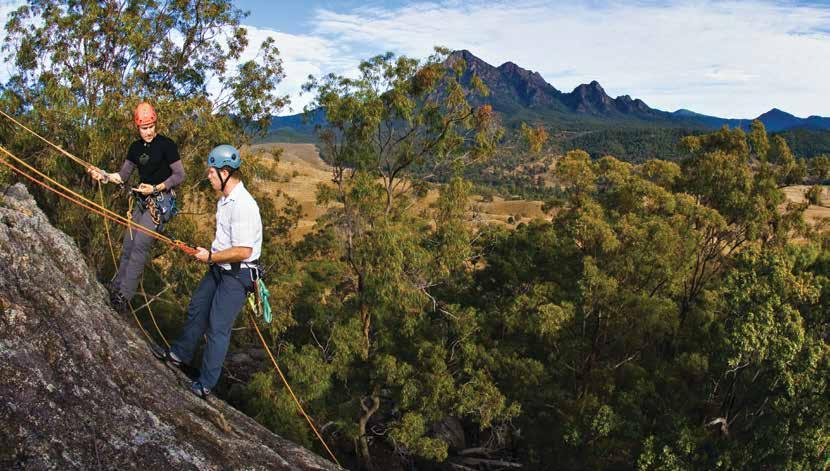MAJOR DRIVERS OF THREATS TO BIODIVERSITY Three key regional drivers of change in the extent and
migration, dispersal, recycling of nutrients, pollination
condition of natural assets over the last decade which
of plants and other natural functions required for
will continue to influence society, economy and the
ecosystem, social and economic health.
environment of the Scenic Rim are:
Loss of soil is also a consequence of inappropriate
1. Demographic changes including population growth
land use and vegetation management which can
and migration with associated infrastructure and
threaten the economic viability of many enterprises.
intensification
Based on known plans for development and other
2. Land use changes (particularly the scale of development) with associated vegetation clearing 3. Changing climatic conditions including extreme weather events
land use change, it is estimated, there is potential for 3,322ha of bushland to be affected by 2031 (SEQ NRM Plan 2014 Update).This is below the bushland cover target of a minimum of 30% for the Scenic Rim.
POPULATION GROWTH AND DEVELOPMENT
CHANGING CLIMATE
The population of the Scenic Rim is estimated
increased pressure on biodiversity, society and the
to grow to 81,985 people by 2036 (Queensland
economy. Pressures including extreme weather events
Government, 2015). Regional centres including
including flooding events in 2011 and 2013 and the
Beaudesert, Tamborine Mountain and Boonah require
Millennium Drought (2001-2009) as well as heat waves
increasingly larger amounts of land to accommodate
have the ability to alter the range and abundance of
Changes in climatic conditions may be placing
new residents. Industrial areas including the Bromelton
many plants and animals.
State Development Area will also have profound
The impacts of a changing climate are likely to result
impacts on biodiversity in the region.
in changes in species distribution and abundance.
LAND USE CHANGE Habitat loss and fragmentation often associated with agriculture and land use change are two priority
While some species will adapt and even thrive in new conditions, other species will be susceptible to reduced range and local extinction.
concerns for biodiversity. As vegetation patches
PEST PLANTS AND ANIMALS
are reduced in size they become isolated and the
Invasive weeds have the potential to outcompete
on-going viability of plants and animals is severely
native flora reducing biodiversity within the region. This
affected. This ultimately leads to a reduction in species
in turn places pressure on native fauna reliant on food
Page 30 | Biodiversity Strategy | Scenic Rim Regional Council







